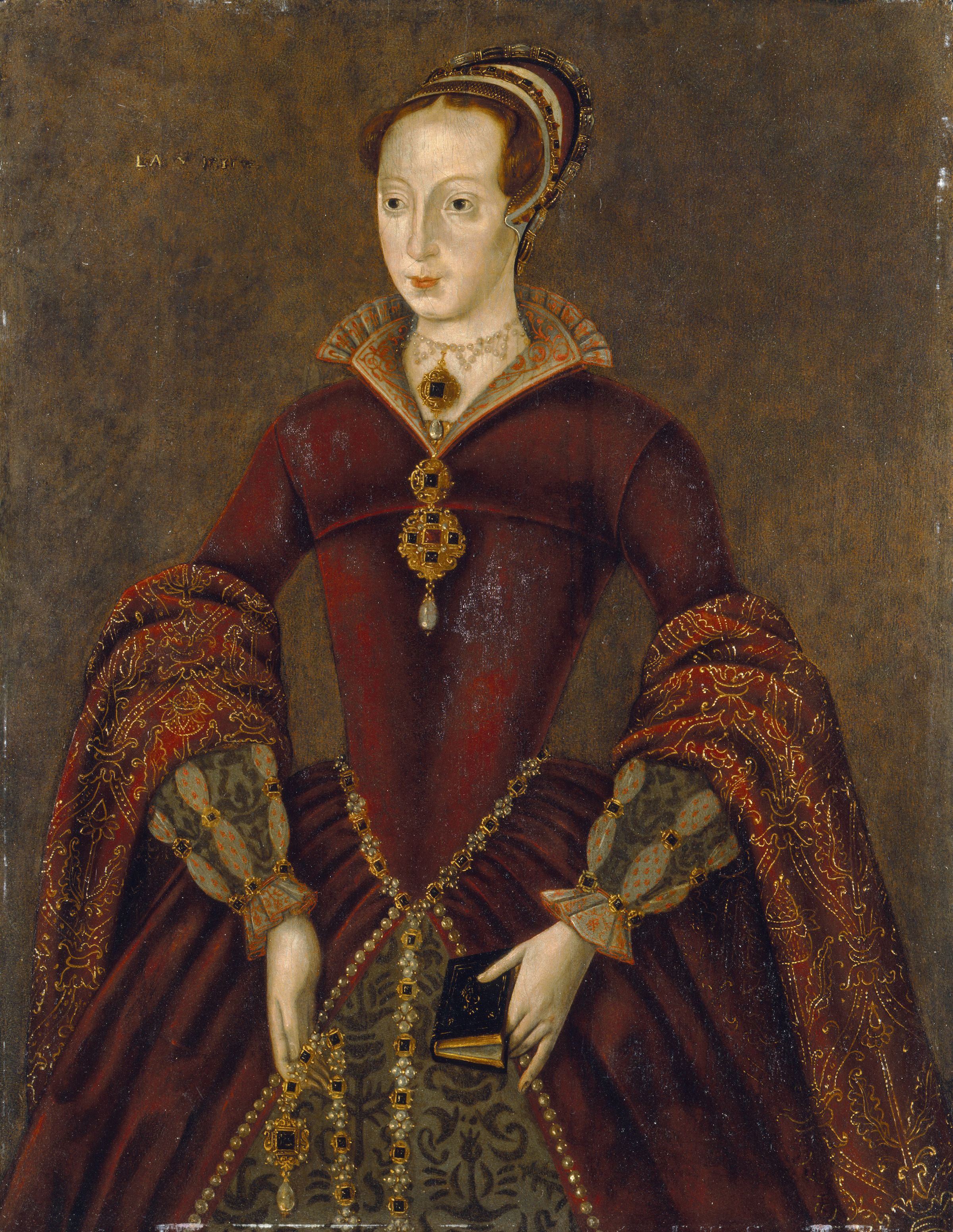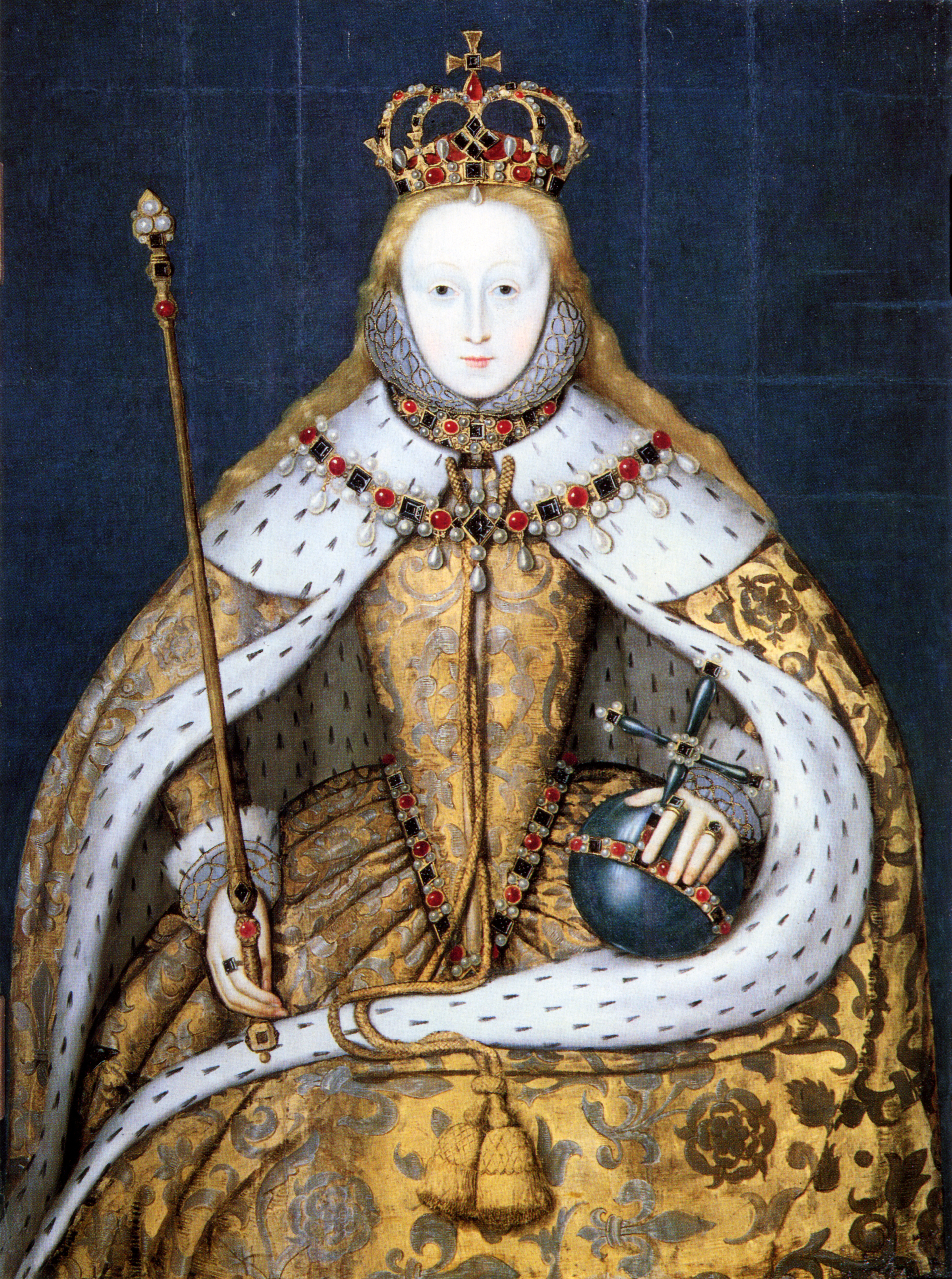On April 30, 2013, the longest streak of queens regnant came to an end when Queen Beatrix of The Netherlands abdicated. Beatrix, her mother and grandmother had reigned for a combined 123 years without any kings between them. However, this was not the first time there have been three queens in a row. It happened once before in Tudor England.
Everyone knows that King Henry VIII had a penchant for discarding his wives. Most people know that he was primarily motivated by his desire to father a male heir. The Tudors were not very successful at producing healthy boys, but they did do a fairly good job at making little girls. Henry's generation had one boy (him) and two girls live to adulthood. The three of them together had five girls and one boy live to adulthood. In fact, by the time Henry died, all of his legal heirs were female except for his nine-year-old son, King Edward VI, who only lived a few years after ascending the throne. With Edward's death in 1553, there was only one other male Tudor descendant living, a five-year-old Scottish grandson of Henry's older sister Margaret, but all of the Scots had been barred from inheriting.
No one wanted to revert to a male descendant of the Yorks or Lancasters. The Wars of the Roses had ended in the last century when Henry's Lancastrian father seized the throne by right of battle and married a Yorkist princess. Besides, the Tudors had been fairly thorough in eliminating most of the potential heirs from the old lines. That left seven female Tudor descendants as the only conceivable monarchs.
Politics and religion quickly caused a struggle for power. There were potentially three real contenders, and interestingly, all three eventually became queen.
Since Henry broke with the Church, the rising tide of the Protestant Reformation had caused deep rifts in the country. One one side stood the Catholics who included Henry's oldest daughter Mary. On the other were the Protestants, among whom was young King Edward and his protectors. Henry's third child, Elizabeth, tried not to talk about religion very much.
Queen #1: Lady Jane Grey
With Edward's death, it looked like power would shift back to the Catholics, so Edward's regent, the Duke of Northumberland, hatched a plot to protect Protestantism and to benefit himself. He married his son Guilford to Edward's Protestant cousin, Lady Jane Grey. Weeks later, Edward died. Both Mary and Elizabeth were not in London, which provided Northumberland his opportunity. He placed 16-year-old Jane on the throne and began trying to consolidate power. Unfortunately for him, and ultimately for Jane, the English were not pleased with this very irregular coup. Mary marched on London, easily overcoming any resistance. After a nine-day reign young Jane was imprisoned in the Tower. Northumberland was executed within weeks, but Mary hesitated to exact vengeance against Jane. After all, Jane had been nothing more than a pawn in the scheme and she was barely more than a child. Nevertheless, Mary strongly desired to marry her cousin, King Philip II of Spain, who did not think it was a good idea to let pretenders to the throne linger and potentially attract supporters. Mary was persuaded, and had Jane beheaded the following February.
Queen #2: Bloody Mary
Thanks to the bitter divorce struggles of her parents, Henry VIII and Catharine of Aragon, Mary's adolescence and early adulthood were marred by great emotional pain. She was separated from her mother, and was not even allowed to visit her on her deathbed. To add insult to injury, Henry also declared her a bastard and would not allow her to marry. By the time she came to the throne at age 37, she desperately wanted to marry and have a legitimate Catholic heir to bring England back to church her maternal grandparents, Ferdinand and Isabella of Spain, had fought so hard to defend. Her marriage to Philip, who was often out of the country, provided little opportunity for conception. Mary endured two phantom pregnancies before dying of influenza at age 42. During her five-year reign, she concentrated most of her efforts on restoring Catholicism and persecuting Protestants, thereby earning the nickname that eventually inspired the morning cocktail.
Queen #3: The Virgin Queen
During her sister's reign, Elizabeth dutifully served her sister and carefully sidestepped the question of her religion, although she was unable to protect herself from others who used her name as the focus of rebellion. She spent some of the time imprisoned, but managed to sweet talk her way into Mary's good graces. She acceded the throne with no problems, and quickly removed England from the Catholic church. Like her sister, Elizabeth had a traumatic childhood. Her mother, Anne Boleyn, had been beheaded on trumped-up charges of adultery when Elizabeth was only three. Elizabeth then watched her father work his way through three more wives. Elizabeth was also declared a bastard and marriage was closed to her by her father, brother and sister, each of whom did not wish to empower her prospective bridegrooms. Elizabeth does not seem to have developed a strong desire to marry and dilute her authority over her kingdom, her household or her person. Instead, she used her potential marriage as a bargaining chip. Men all over Europe sought to marry her and she squeezed every bit of influence, power or money out of each opportunity without ever taking a husband. Her long reign was one of glory for England, especially after the defeat of her brother-in-law Philip's Spanish Armada, and the establishment of colonies in America. When Elizabeth executed her cousin and prospective heir, Mary Queen of Scots, for treason, she eliminated the possibility of adding a fourth queen to the queen streak. She was succeeded instead by Mary's son James.
Thus, the first three-queen streak in history lasted 48 years from 1553 to 1601.
For more about these Tudor queens and their propensity for killing their cousins, read my post Killing Queens: A Bloody Tudor Heritage.



What a wonderfully informative piece!
ReplyDelete